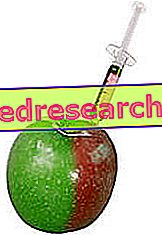What's this
What is waffle maker?
Waffel, also spelled "wafel" or "waffle" or "wafle" and known in Belgian francophone as "gaufre", is the name of a sweet recipe typical of Central Europe, more precisely from France and Belgium.

The waffle iron is a kind of compromise between a pancake and a crispy waffle. The raw dough, with a leavening capacity, is very similar to a semi-liquid batter like that of the pancake - a variable characteristic based on the waffle recipe. However, while the pancake is cooked in the pan and has the appearance of a soft pancake, the waffle is prepared in specific molds or special electric plates, of variable shape, which give it the characteristic "checkered" or cellular surface.
Waffles have a rather rich nutritional content. These are sweet foods that contain various ingredients and, compared to the VII basic food groups, enjoy intermediate or promiscuous properties. However, these are very caloric products, rich in soluble and complex carbohydrates, but also in lipids characterized by a significant percentage of saturated fat and cholesterol. Vitamins and minerals are not lacking, but there are molecules frequently subject to food intolerance - gluten, lactose.
In the diet, consuming large portions of waffles has a far from negligible impact. They are not foods suitable for food therapy against obesity and metabolic disorders; even in the healthy person's diet, especially in the long term, an excess of waffles can prove inadequate and negatively impact the state of health.
The waffle recipe is not complex; it is sufficient to create a mixture of eggs, flour, sugar, butter, milk, chemical yeast and vanilla, and cook it in the appropriate instruments. However, it must be specified that there are different types of waffles, or rather different variants, which differ according to the type of cooking, the shape, the type of ingredients or the relationship between them.
Waffles are now globalized foods; they are eaten all over the world but especially in Belgium, where at least a dozen types are known. They can be cooked fresh, or using the ready-made batter, or regenerating pre-cooked and frozen. Some are classified as finger food, street food, fast food and, especially the very seasoned ones, junk food.
Nutritional Properties
Nutritional properties of waffles
Any waffle is a high-calorie food, even if the nutritional profile can change significantly based on the recipe and seasoning. The energy of the waffles comes primarily from lipids and carbohydrates, although the proportion changes significantly based on the amount of butter, and finally from proteins. Fatty acids are mainly saturated, "usually" complex carbohydrates (starch) - although in the case of sweet waffles, soluble sugars acquire considerable importance - and peptides with a high and medium biological value - due to the presence of various kinds of food. They contain fiber in moderate quantities, while cholesterol is abundant.
The waffle brings gluten and lactose - both for the butter content and for the possible addition of milk. Purines and amino acid phenylalanine are present at significant levels. It is possible that, in the case of particularly pronounced histamine intolerance, even the presence of eggs - more precisely of egg white - which food releaseers can be problematic.
The waffles have an interesting vitamin profile, determined by the excellent concentration of water-soluble B-group molecules, such as thiamine (vit B1), riboflavin (vit B2) and niacin (vit PP), but also fat-soluble such as retinol (vit A) and calciferol (vit D). With regard to minerals, phosphorus, calcium, iron and zinc levels stand out above all.
Diet
Waffle in the diet
Waffles are not easily digestible foods. They are therefore inappropriate, especially in meals that precede sleep, in the event of impairments and dysfunctions of the stomach and esophagus such as: dyspepsia, stomach acid, hypochloridria, gastritis, gastric or duodenal ulcer, hiatal hernia and excess reflux or disease gastroesophageal reflux.
The waffles are contraindicated in the nutritional therapy against overweight, due to the excess of calories, a good part of which is attributable to lipids due mainly to the presence of butter. Due to the non-negligible level of cholesterol, they can be considered unsuitable for the ordinary diet of those suffering from hypercholesterolemia. They also have a glycemic load that can negatively affect the diet for type 2 diabetes mellitus and hypertriglyceridemia. Waffles should also be consumed in moderation in case of hyperuricemia and tendency to renal uric acid lithiasis (calculosis) - especially in the presence of overweight. Due to the presence of whole eggs, they are not considered pertinent even to dietary therapy against phenylketonuria. They should be totally excluded from the diet of celiac and lactose intolerant. In the case of histamine intolerance, what makes the difference is mainly the level of individual hypersensitivity.
Waffles contain a good dose of high biological value proteins, but they cannot be considered a primary nutritional source of essential amino acids. The same applies to vitamins and minerals; undoubtedly participate in filling the need for water-soluble molecules of group B, fat-soluble vit A and vit D, calcium, phosphorus, iron and zinc. However, due to the contraindications mentioned above, these are foods to be consumed only marginally and therefore not incisive on the overall nutritional balance.
Traditional waffles do not meet vegan and vegetarian criteria. Furthermore, they are not suitable for Hindu, Buddhist, Jewish and Muslim diets.
The average waffle portion should be as moderate as possible.
Kitchen
Types of waffles and differences
Below we will list the main types of waffles:
- Brussels Waffles: they contain brewer's yeast or chemical yeast, only occasionally both. They are lighter, have "squares" - or pockets - larger than the other European waffle and rectangular shapes. In Belgium, waffles are served hot by street vendors and dusted with confectioners' sugar, although in tourist areas they could be enriched with whipped cream, hazelnut and cocoa spread. Some variants of Brussels waffles - with whipped egg white cooked in large rectangular plates - date back to the 18th century
- Liège's Waffel: it is a richer, fuller and sweeter waffle. Originally from the largest region of Wallonia, in eastern Belgium - also known as "Gaufres de chasse" - it is an adaptation of brioche bread dough, with added praline sugar and caramel on the outside. It is the most common type of waffle available in Belgium. It can be cooked in simple varieties, with vanilla and cinnamon
- Flemish waffles: also called "Gaufres à la Flamande", they are a specialty of northern France and some parts of western Belgium. The original recipe is as follows: <
- American waffles: they can vary significantly. Generally more compact, crunchy and thin compared to the Belgian versions, they are often based on leavened batter and mixed with pecans, fruits, chocolate drops or various kinds of berries; it can be round, square or rectangular. Like American pancakes, they are usually served as sweet food for breakfast, topped with butter and maple syrup, other fruit syrups, honey or icing sugar; sometimes with bacon. They are also used in the preparation of many savory dishes, such as fried chicken and kidney stew. They can also be served as a dessert, with ice cream and cream. In the southern United States a large chain called "Waffel House" is omnipresent
- Belgian waffles: they are a variety of North American waffles, based on a simplified version of the Brussels Gaufres. The recipes typically require sodium bicarbonate as a leavening agent, although some may contain natural yeast. They differ from the American pods in the use of 1 ½ inch plates. They take this name from the Bel-Gem brand
- Waffel Bergische: or Waffle from the county of Berg, is a specialty of the German region of Bergisches Land. These waffles are crunchy and less compact than Belgian ones; they have the shape of a heart and are served with cherries, cream and possibly rice pudding as part of the traditional Sunday afternoon party
- Hong Kong style Waffel: here known as "grid cake" or "grid biscuits", it is a pod produced and sold by street vendors. It is similar to a traditional but larger waffle, round in shape and divided into four quarters. It is served as a seasoned snack on one side only with butter, peanut butter and sugar, then folded in a semicircle. It has a very sweet taste, since sugar and condensed milk are also added to the mixture. It is generally soft and not crunchy. Traditional Hong Kong style waffles generally have a strong yolk flavor. Sometimes ingredients like honey, chocolate and fruit are added which give it different colors
- Pandan Waffel: it is native to Vietnam and is characterized by the use of pandan aroma and coconut milk in the batter. The addition of pandan aroma colors the batter green. Once cooked, the waffles are brown and crunchy on the outside and remain green and chewy on the inside. Unlike most waffles, pandans are generally consumed simply. In Vietnam they are relatively cheap and popular among children. It is a famous street food made of cast iron charcoal heated or electric molds
- Scandinavian style waffles: common in all Nordic countries, they are thin and heart-shaped. The batter is similar to other varieties. The most common recipe is sweet, with whipped or sour cream and strawberry or raspberry jam, or berries, or simply covered in sugar.
- In Norway they are also seasoned with "brunost" and "gomme". As with crèpes, there are those who prefer them in a salty style with various ingredients, such as blue cheese
- In Finland savory seasonings are rare; generally they are used jam, sugar, whipped cream or vanilla ice cream.
- In Iceland the traditional garnish is based on rhubarb, blueberry jam, chocolate, syrup or whipped cream
- In the Swedish tradition, waffles are seasoned with strawberry jam, blueberry jam, blackberry jam, raspberry jam, raspberry and blueberry jam, sugar and butter, vanilla ice cream and whipped cream. Others can be: salmon eggs, cold-smoked salmon and fresh cream.
- Gofri: in the singular gofre, they are Italian waffles of Piedmontese cuisine: they have a light and crunchy consistency, according to the oldest recipe they do not contain eggs or milk and are produced both in sweet and savory versions. Central Italian cuisine also offers waffle-like cookies, known locally as pizzelle, ferratelle (in Abruzzo) or cancelle (in Molise)
- Stroopwafel: they are thin waffles with a syrup filling. The batter is made from flour, butter, brown sugar, yeast, milk and eggs. Medium-sized batter balls are placed on the pod plate; when they are cooked and still hot, they are cut in two and filled with syrup. They are very popular in the Netherlands and Belgium
- Galettes campinoises / Kempense galetten: they are a type of waffle popular in Belgium. Dry and crunchy, but also buttery, in the mouth they are crumbly and soft
- Hotdog waffles: they are long wafers containing a hot dog inside them, similar to a corn dog. Originally from Thailand, this snack is served with ketchup, mayonnaise or both. The batter is similar to American waffles, but uses margarine instead of butter, since it is one of the most accepted eccentricities of their food culture
- Waffel on a stick: these are long wafers cooked on a stick, usually dipped in something like chocolate syrup and whipped cream on top.
Water Waffles with Spelled Flour and Honey
X Problems with video playback? Reload from YouTube Go to Video Page Go to Video Recipes Section Watch the video on youtubeHistory
History of waffles
The oldest reference to waffles, or rather to the "Gaufres de Bruxelles", dates back to 1842/43, mentioned by Florian Dacher, a Swiss baker who worked in Ghent (Belgium). Philippe Cauderlier would then publish Dacher's recipe in the 1874 edition of his recipe book "La Pâtisserie et la Confiture". Instead, Maximilien Consael, another Ghent chef, claimed to have invented the recipe in 1839, although there are no written records until his participation in the 1856 Brussels Fair. Neither of them actually created the recipe, both simply disclosed and formalized a pre-existing formula.
The original recipe of Gaufres à la Flamande was published in 1740 by Louis-Auguste de Bourbon in "Le Cuisinier Gascon".
The founder of the Bel-Gem, from which the name of Belgian waffel, was originally an authentic seller of Gaufres de Bruxelles who contributed to spreading this style to the "1964 New York World's Fair".
The Swedish waffle tradition dates back to at least the 15th century. In Sweden there is a particular day in which these pods are eaten, the Våffeldagen (waffle day), which falls every March 25th (nine months before Christmas).



